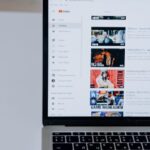Decoding LinkedIn Ad Metrics for Optimization
Understanding the intricate landscape of LinkedIn Ad metrics is paramount for any marketer or business aiming to achieve tangible results on the platform. Unlike many other digital advertising channels, LinkedIn offers a unique B2B environment, making its metrics particularly indicative of professional engagement and business-centric goals. Simply running campaigns without a deep dive into the performance data is akin to navigating blindfolded; true optimization stems from a meticulous dissection of every available data point, transforming raw numbers into actionable insights. This comprehensive guide delves into the core metrics, their implications, and advanced strategies for leveraging them to drive superior campaign performance.
The Foundation: Understanding the LinkedIn Ads Ecosystem and Its Core Value
LinkedIn stands out as the world’s largest professional network, boasting hundreds of millions of active users who are primarily engaged in professional development, networking, and business activities. This inherent professional context imbues LinkedIn advertising with a distinct value proposition, particularly for B2B marketers. The platform allows for hyper-targeted advertising based on professional demographics such as job title, industry, company size, seniority, skills, and even professional groups. This granular targeting capability means that the audience reached is often highly relevant, translating to more meaningful interactions and a higher potential for conversion, provided the ad campaigns are well-executed and their performance metrics thoroughly analyzed.
LinkedIn Ad campaigns are structured around various objectives, each designed to align with specific marketing goals:
- Brand Awareness: Maximizing impressions and reach to a target audience.
- Website Visits: Driving traffic to a specific landing page.
- Engagement: Encouraging interactions like likes, comments, shares, and follows.
- Video Views: Promoting video content to capture attention.
- Lead Generation: Collecting leads directly on the LinkedIn platform via Lead Gen Forms.
- Website Conversions: Driving specific actions on an external website (e.g., sign-ups, downloads, purchases).
- Job Applicants: Attracting qualified candidates for job openings.
The critical first step in decoding LinkedIn Ad metrics is to align the metrics you scrutinize most closely with your chosen campaign objective. A brand awareness campaign will prioritize impressions and reach, whereas a lead generation campaign will focus intensely on Cost Per Lead (CPL) and Conversion Rate (CVR). Misalignment here can lead to optimizing for the wrong outcomes and misinterpreting campaign success.
Key Metric Categories and Their Significance
LinkedIn Campaign Manager provides a wealth of data, categorizing performance across various dimensions. Understanding what each metric signifies and how it contributes to the overall picture is fundamental to effective optimization.
1. Reach & Awareness Metrics
These metrics provide insights into how widely your ads are being seen and by how many unique individuals. They are foundational for brand-building objectives but also serve as a prerequisite for any other desired action. Without sufficient reach and awareness, subsequent metrics like clicks or conversions become irrelevant.
-
Impressions: This metric represents the total number of times your ad was displayed to users. It’s a raw count and includes multiple views by the same user. For brand awareness campaigns, maximizing impressions is often a primary goal. However, a high number of impressions alone isn’t a guarantee of success; it must be considered alongside other metrics like reach and frequency to understand true impact. Monitoring impression trends can indicate whether your ads are serving consistently or encountering delivery issues (e.g., budget constraints, targeting too narrow). A sudden drop in impressions might signal an issue with ad approval, audience saturation, or a highly competitive auction. Conversely, an unexpectedly high number could point to a broader audience than intended, which might dilute targeting quality.
-
Reach: Unlike impressions, reach measures the total number of unique users who saw your ad. If an ad is shown to the same person five times, it counts as five impressions but only one unique reach. Reach is crucial for understanding the true extent of your audience exposure and is a superior metric to impressions for assessing brand awareness campaigns. A high reach indicates broad exposure within your target audience. When reach plateaus, it suggests that you have likely exposed your ad to most of your target audience, indicating a need to expand targeting or refresh creatives to avoid ad fatigue.
-
Frequency: This is calculated as Impressions divided by Reach (Frequency = Impressions / Reach). It indicates the average number of times a unique user saw your ad.
- Low Frequency (e.g., 1-2): Your ads might not be seen enough to create a lasting impression or drive action. Users often need multiple exposures to an ad before they notice it, process the message, and take action. If your campaign objective is to drive a specific action, a very low frequency might mean your message isn’t sticking.
- Optimal Frequency (e.g., 3-7): This range is often considered ideal for most campaigns, allowing for message repetition without becoming annoying. It gives users enough exposure to remember your brand and consider your offer. The “sweet spot” varies by industry, product, and message complexity.
- High Frequency (e.g., 8+): This indicates ad fatigue, where your audience is seeing your ad too often. This can lead to decreased engagement (lower CTR), increased CPC, and negative brand sentiment. Users become annoyed, scroll past the ad, or even hide it.
- Optimization Strategy for Frequency: If frequency is too high, consider:
- Refreshing creative and ad copy: New visuals and messaging can re-engage the audience.
- Expanding your target audience: Broaden your criteria slightly to reach new unique users.
- Adding exclusion lists: Exclude users who have already converted or are not relevant.
- Pausing campaigns or specific ad variations: Give your audience a break.
- Splitting budget across multiple ad sets: Distribute impressions more widely.
2. Engagement Metrics
These metrics quantify how users interact with your ads beyond simply viewing them. They provide insights into the relevance and appeal of your ad content and targeting.
-
Clicks (All Clicks vs. Unique Clicks):
- All Clicks: The total number of clicks on your ad, including multiple clicks by the same user and clicks on various parts of the ad (e.g., headline, company name, profile picture, “see more” link, actual CTA button). This can sometimes inflate the perceived engagement if many clicks are accidental or non-actionable.
- Unique Clicks: The number of unique users who clicked on your ad. This is a more accurate measure of how many distinct individuals were interested enough to interact.
- Focus on the right clicks: For website visit campaigns, focus on clicks that lead to your website. For engagement campaigns, all clicks (including likes/shares within the ad) contribute.
-
Click-Through Rate (CTR): Calculated as (Total Clicks / Impressions) * 100. CTR is a fundamental indicator of ad relevance and appeal. A higher CTR suggests that your ad copy, creative, and targeting are resonating well with your audience.
- Industry Benchmarks: CTRs on LinkedIn typically range from 0.3% to 0.6% for display ads, but can be higher (0.8% – 2%+) for well-targeted sponsored content or text ads. Lead Gen Forms often see higher CTRs due to their direct value proposition. Benchmarks vary significantly by industry, audience, and ad format.
- Factors Influencing CTR:
- Ad Creative: High-quality, visually appealing images or videos.
- Ad Copy: Compelling headlines, concise and relevant body text, strong call-to-action (CTA).
- Targeting: The precision with which you’ve matched your ad to the right audience.
- Offer: The perceived value of what you’re promoting (e.g., valuable content, compelling demo).
- Placement: Where the ad appears (e.g., feed, sidebar).
- Optimization Strategy for CTR:
- A/B Test Everything: Experiment with different headlines, body copy, images, videos, and CTAs.
- Refine Targeting: Ensure your audience is genuinely interested in your offering. Use LinkedIn’s audience insights to dig deeper.
- Improve Ad Relevancy: Align your ad message directly with the pain points and interests of your target persona.
- Stronger CTAs: Make your call to action clear, concise, and persuasive (e.g., “Download Now,” “Register for Webinar,” “Request a Demo”).
-
Engagement Rate: A broader metric than CTR, especially for sponsored content campaigns. It includes clicks, but also reactions (likes, loves, insights, celebrates), comments, shares, and new followers gained directly from the ad. Calculated as (Total Engagement / Impressions) * 100.
- This metric is vital for brand building and content marketing campaigns, as it measures the extent to which your content sparks interaction and community building. High engagement rate signifies that your content is valuable, thought-provoking, or resonates emotionally with your audience.
- Optimization Strategy: Focus on creating highly valuable, relevant, and shareable content. Ask questions in your ad copy to encourage comments. Promote content that naturally sparks discussion.
-
Video Completion Rate (VCR): Specifically for video campaigns, this metric tracks how much of your video content users are watching. LinkedIn provides breakdowns at 25%, 50%, 75%, and 100% completion points.
- Significance: Lower completion rates indicate that your video is not capturing or retaining viewer interest, suggesting issues with the opening hook, pacing, or overall content relevance. High completion rates, especially 50% or 75%, suggest strong viewer interest and successful storytelling.
- Optimization Strategy:
- Hook early: Grab attention in the first 3-5 seconds.
- Keep it concise: LinkedIn users are busy professionals; get to the point.
- Deliver value upfront: Don’t save the best for last.
- Test different video lengths and formats: Shorter videos often perform better for initial awareness.
- Add captions: Many users watch videos with sound off.
- Use video views for retargeting: Create audiences of users who watched a significant portion of your video for subsequent campaigns.
3. Cost Metrics
These metrics reveal the efficiency of your ad spend. They are crucial for budget management and demonstrating ROI.
-
Cost Per Impression (CPM): The cost you pay for 1,000 impressions. Calculated as (Total Spend / Total Impressions) * 1000.
- Significance: Primarily relevant for brand awareness campaigns. A lower CPM means you’re getting more eyeballs for your budget. CPM can fluctuate based on audience size, targeting specificity, ad quality, and competition in the auction.
- Optimization Strategy: Broaden targeting slightly (if acceptable for your objective), improve ad relevance (which can lead to higher quality scores and lower CPMs), or consider different ad formats (e.g., text ads generally have lower CPMs than video ads).
-
Cost Per Click (CPC): The average cost you pay each time someone clicks on your ad. Calculated as (Total Spend / Total Clicks).
- Significance: Critical for website visit and engagement campaigns. A lower CPC means you’re driving traffic or engagement more efficiently. LinkedIn CPCs are generally higher than on other platforms due to the premium audience.
- Factors Influencing CPC: Ad relevance, CTR (higher CTR often leads to lower CPC), bid strategy, audience competition, and ad quality.
- Optimization Strategy: Focus on increasing CTR through compelling creatives and copy. Refine targeting to ensure relevance. Adjust bid strategies (e.g., use Target Cost bidding if you have a specific CPC goal).
-
Cost Per Lead (CPL): The average cost to acquire one lead via LinkedIn Lead Gen Forms. Calculated as (Total Spend / Total Leads).
- Significance: The most critical metric for Lead Generation campaigns. It directly measures the efficiency of your lead acquisition efforts.
- Optimization Strategy: This involves a multi-faceted approach:
- Improve CTR: More clicks mean more potential leads.
- Optimize Lead Gen Form: Minimize fields, ensure clear value proposition, pre-fill as much information as possible.
- Refine Audience: Ensure your audience is truly qualified and in need of your offer.
- Stronger Offer: Is the lead magnet (e.g., whitepaper, demo, webinar) compelling enough to warrant sharing information?
- A/B test different offers and form lengths.
- Leverage retargeting: Target users who engaged with content but didn’t convert on the first attempt.
-
Cost Per Conversion (CPCv): The average cost to acquire one website conversion (e.g., sales, sign-ups, downloads). Calculated as (Total Spend / Total Conversions).
- Significance: The ultimate efficiency metric for Website Conversion campaigns. It ties directly to business outcomes.
- Optimization Strategy: Similar to CPL, but also includes landing page optimization. Ensure your landing page is highly relevant to the ad, mobile-friendly, loads quickly, and has a clear conversion path. A/B test landing page elements (headlines, CTAs, layout). Ensure your Insight Tag and conversion tracking are set up correctly.
-
Cost Per Acquisition (CPA): While often used interchangeably with CPCv, CPA can refer to the cost of acquiring a customer, which involves more than just the ad spend (e.g., sales team follow-up, CRM costs). LinkedIn typically reports CPCv. The goal is always to reduce CPA while maintaining or improving lead/conversion quality.
-
Budget Pacing: Understanding how your budget is being spent over time (daily vs. lifetime). Campaign Manager shows “Paced Budget” (how much of your budget LinkedIn expects to spend daily) versus “Actual Spend.”
- Significance: Helps ensure your campaign spends its budget effectively without overspending or underspending. Underpacing suggests your audience might be too small, bids too low, or ads not approved. Overpacing means you might run out of budget too quickly.
- Optimization Strategy: Adjust bids, audience size, or daily budget caps to ensure optimal pacing and consistent delivery.
4. Conversion Metrics
These metrics directly measure the success of your campaigns in achieving specific business objectives. They are the most critical for demonstrating ROI.
-
Conversions: The total number of desired actions completed as a result of your ads. This could be anything from a lead form submission to a whitepaper download, a registration for a webinar, or a purchase.
- Significance: The ultimate measure of direct campaign success in driving business value.
- Key to Accurate Measurement: Meticulous setup of the LinkedIn Insight Tag and specific conversion events in Campaign Manager. Define what a “conversion” means for each campaign.
-
Conversion Rate (CVR): The percentage of clicks (or unique clicks, depending on your definition) that result in a conversion. Calculated as (Conversions / Clicks) * 100.
- Significance: Indicates the effectiveness of your ad, offer, and landing page in persuading users to take the desired action once they’ve clicked. A high CVR means your funnel is efficient.
- Optimization Strategy:
- Improve landing page experience: Relevance, clarity, speed, mobile optimization.
- Match ad message to landing page: Consistency is key.
- Refine offer: Is it compelling enough?
- A/B test different elements of your ad creative, copy, and landing page.
- Simplify the conversion path: Reduce friction (e.g., fewer form fields).
- Ensure targeting is precise: You want qualified visitors, not just any visitor.
-
Leads: For Lead Generation campaigns, this is the raw count of completed Lead Gen Forms.
- Significance: Directly measures your lead acquisition volume. Beyond just quantity, it’s crucial to track lead quality. Are these leads converting into opportunities and customers down the sales funnel? Integrate with CRM data for a complete picture.
-
Return on Ad Spend (ROAS): For campaigns directly tied to revenue, ROAS measures the revenue generated for every dollar spent on ads. Calculated as (Revenue from Ads / Ad Spend).
- Significance: The ultimate ROI metric for revenue-driving campaigns.
- Challenges: Difficult to track accurately without robust CRM integration and closed-loop reporting. LinkedIn’s internal reporting primarily focuses on first-touch or last-touch attribution, which may not capture the full multi-touch journey. Often requires combining LinkedIn data with CRM and sales data.
-
Attribution Models: Understanding how LinkedIn attributes conversions is crucial. LinkedIn’s default reporting typically uses a “last touch” attribution model within its platform, meaning the conversion is attributed to the last LinkedIn ad the user interacted with before converting.
- Implications: This can understate the value of campaigns focused on earlier funnel stages (awareness, engagement). Consider how LinkedIn fits into your broader marketing mix and customer journey. Use multi-touch attribution models outside of LinkedIn’s platform (e.g., in Google Analytics, your CRM) to get a holistic view of LinkedIn’s contribution to conversions.
5. Audience Metrics
These metrics provide insights into the characteristics and behavior of the audience engaging with your ads.
-
Audience Demographics: LinkedIn provides breakdowns of your audience by job title, industry, company size, seniority, location, and more.
- Significance: Helps validate your targeting assumptions and identify unforeseen audience segments that are performing well or poorly. You might discover a niche performing exceptionally well, prompting you to create lookalike audiences or refine future targeting.
- Optimization Strategy: Use these insights to refine or expand your targeting. If a specific job title or industry is overperforming, create a dedicated ad set for them with tailored messaging. If a segment is underperforming, exclude them.
-
Audience Engagement: Observe how different audience segments (e.g., by seniority, by company size) interact with your ads.
- Significance: Helps tailor content and offers to specific sub-segments.
- Optimization Strategy: If senior executives respond better to thought leadership, while mid-level managers prefer practical guides, segment your campaigns and tailor your content accordingly.
-
Audience Expansion: LinkedIn offers features like “Audience Expansion” and “Lookalike Audiences” to broaden your reach while maintaining relevance.
- Significance: These can help scale successful campaigns by finding new, similar users. Monitor the performance of these expanded audiences closely, as they may not perform identically to your core highly targeted audiences.
- Optimization Strategy: Test Audience Expansion cautiously. If it delivers good results, consider creating more specific Lookalike audiences based on your best-performing converters or website visitors.
Setting Up for Success: Tracking and Measurement
Accurate data collection is the bedrock of effective optimization. Without proper tracking, even the most sophisticated analysis is futile.
1. The LinkedIn Insight Tag
The LinkedIn Insight Tag is a piece of JavaScript code that you place on your website. It’s LinkedIn’s equivalent of Google’s Global Site Tag or Facebook Pixel.
- Installation:
- Access “Insight Tag” under “Analyze” in Campaign Manager.
- Copy the code and paste it into the global header (just before the
tag) of your website on every page. Most content management systems (CMS) like WordPress, Shopify, or custom platforms have specific areas for this. - Use Google Tag Manager (GTM) for a more robust and flexible installation. This allows you to deploy and manage the Insight Tag and other tracking codes without directly editing website code.
- Verification: After installation, verify the tag’s status in Campaign Manager. It should show as “Active.” Use the LinkedIn Insight Tag Helper Chrome extension to confirm it’s firing correctly on your website.
- Troubleshooting Common Issues:
- Tag not firing: Incorrect placement, conflicting scripts, ad blockers.
- “No activity detected”: Ensure traffic is actually hitting the pages where the tag is installed.
- Data discrepancies: Differences between LinkedIn’s reported conversions and your internal analytics/CRM might arise from attribution models, timing, or tag firing issues.
2. Conversion Tracking
Once the Insight Tag is active, you need to define specific conversion events that matter to your business.
- Setting up specific conversions:
- In Campaign Manager, go to “Analyze” > “Conversion Tracking.”
- Click “Create a Conversion.”
- Choose the conversion type:
- Page Load: Triggers when a specific page loads (e.g., a “thank you” page after a form submission). This is the most common and easiest to implement.
- Event-specific: Triggers on a specific user action (e.g., clicking a button, submitting a form without a redirect). Requires more advanced setup (using JavaScript events with GTM).
- Define conversion details: Name, category (e.g., Lead, Purchase), value (if applicable), and attribution window (how long after a click or impression you attribute a conversion to your ad). LinkedIn defaults to 30-day click and 7-day view attribution.
- Associate with campaigns: Link the conversion event to the relevant campaigns for reporting.
3. Offline Conversion Uploads
For businesses with longer sales cycles or those that close deals offline, LinkedIn allows for the upload of offline conversion data.
- Process: Export lead data from your CRM (including a unique identifier like email address), format it according to LinkedIn’s specifications, and upload it to Campaign Manager.
- Benefits: Provides a more complete picture of your campaign ROI, allowing you to attribute sales that occurred weeks or months after the initial LinkedIn ad interaction. This is crucial for calculating accurate ROAS and CPA for B2B cycles.
4. Campaign Manager Reporting Interface
The Campaign Manager interface is your primary tool for analyzing metrics.
- Navigating Reports: Understand the different tabs (Overview, Demographics, Performance, Trend).
- Customizing Columns: Crucially, customize the columns to display the metrics most relevant to your campaign objective. Drag and drop, select/deselect metrics, and save custom views.
- Filtering Data: Segment data by date range, campaign, ad type, audience, creative, and more. This allows for granular analysis and identification of top-performing (or underperforming) segments.
- Exporting Data: Export reports as CSV files for deeper analysis in spreadsheets or business intelligence tools.
5. A/B Testing Best Practices
Rigorous testing is essential for optimization.
- Hypotheses: Formulate clear hypotheses (e.g., “Changing the headline to X will increase CTR by Y%”).
- Variables: Test one variable at a time (e.g., headline, image, CTA, audience segment) to isolate impact.
- Statistical Significance: Ensure your tests run long enough and gather sufficient data to achieve statistical significance, meaning the results are unlikely to be due to chance. LinkedIn’s reporting may not offer direct statistical significance calculations, so use external tools or apply general rules of thumb (e.g., minimum 100 conversions per variant).
- Duration: Run tests for at least 1-2 weeks to account for daily fluctuations and ensure adequate impressions/clicks. Avoid ending tests too early.
- Consistent Environment: Keep other variables constant during the test (e.g., budget, bid strategy).
Optimizing Campaigns Based on Metrics
This section moves from understanding metrics to acting on them. Each campaign objective requires a specific optimization focus.
1. Optimizing for Awareness/Reach
- Analyzing Impressions and Frequency:
- If impressions are low despite a healthy budget, your audience might be too small, or your bids are too low to win the auction.
- Monitor frequency. If it rises above your comfort zone (e.g., 5-7), it’s time to take action.
- Creative Refresh: Introduce new visuals (images, videos) and ad copy variations. Even slight changes can restart user engagement. Rotate ads to keep the campaign fresh.
- Audience Expansion/Refinement: If frequency is high, gently expand your audience criteria or use Lookalike Audiences to find similar users. If reach is plateauing, consider new audience segments.
- Bid Strategy Adjustments: For awareness, often use Max Delivery or Target Cost (if you have a target CPM). Ensure your bid is competitive enough to win impressions within your target audience.
2. Optimizing for Engagement/Traffic
- Analyzing CTR and CPC: These are your primary indicators. A low CTR indicates your ad isn’t grabbing attention or isn’t relevant to the audience it’s reaching. A high CPC means you’re paying too much for each click.
- Ad Copy and Creative Iteration:
- Headlines: Test different hooks, pain points, and benefit-driven statements.
- Body Copy: Experiment with short vs. long copy, storytelling, bullet points.
- CTAs: Try different action verbs and benefits (“Learn More,” “Get Your Guide,” “Explore Solutions”).
- Visuals: A/B test different images, video thumbnails, and video content. Animated graphics often outperform static images.
- Landing Page Optimization: Crucial. Your ad might be great, but a poor landing page kills CVR.
- Relevance: Does the landing page content perfectly match the ad’s promise?
- Load Speed: Slow pages lose visitors.
- Mobile-friendliness: Most LinkedIn users access via mobile; ensure your page is responsive.
- Clarity: Is the value proposition clear? Is the CTA prominent?
- Targeting Refinement:
- More Specific Audiences: If a broad audience isn’t performing, narrow it down based on demographics or firmographics that showed higher engagement.
- Exclusion Lists: Exclude irrelevant job titles, industries, or companies. Exclude existing customers or leads who have already converted to avoid wasted spend and ad fatigue.
3. Optimizing for Leads/Conversions
This is where the rubber meets the road for most B2B advertisers. CPL and CVR are king.
- Analyzing CPL and CVR: Identify where drop-offs occur. Is it low CTR on the ad? Or a high drop-off rate on the landing page/lead form?
- Lead Form Optimization (for LinkedIn Lead Gen Forms):
- Number of Fields: Generally, fewer fields lead to higher CVR. Only ask for essential information.
- Clarity of Offer: Reinforce the value proposition within the form itself.
- Pre-filled Fields: LinkedIn automatically pre-fills user information, reducing friction. Ensure your form maps correctly to LinkedIn profile data.
- Custom Questions: Use custom questions strategically to pre-qualify leads, but balance this with form completion rates. If CPL is too high, remove non-essential questions.
- Offer Refinement: Is your lead magnet truly compelling for your target audience?
- Higher Perceived Value: Is it an exclusive report, an expert webinar, a free tool, or a personalized demo?
- Relevance to Buyer Journey: Offer content appropriate for the stage of the buyer journey you’re targeting. Awareness-stage users might download a whitepaper, while decision-stage users might request a demo.
- Retargeting Strategies:
- Website Visitors: Target users who visited your site but didn’t convert.
- Engaged Audiences: Target users who engaged with your previous LinkedIn content or ads but didn’t convert.
- Warm up cold audiences: Use awareness campaigns to get initial engagement, then retarget for lead generation.
- Ad Creative and Messaging Alignment with Funnel Stage:
- Top-of-Funnel (ToFu): Educational, thought leadership content.
- Middle-of-Funnel (MoFu): Solutions-oriented, case studies, webinars.
- Bottom-of-Funnel (BoFu): Demos, free trials, direct sales pitches.
- Bid Strategy (e.g., Conversion-based bidding): If you have sufficient conversion data (at least 15-20 conversions per week per ad set), switch to automated bidding strategies like Maximum Delivery with “Conversions” as the optimization goal. LinkedIn’s algorithm can then optimize for conversions directly. Target Cost bidding can also be effective if you have a specific target CPL/CPCv.
4. Budget and Bid Management
Effective budget and bid management ensure you get the most out of your spend without overpaying.
- Understanding Bid Types:
- Automated Bid (Max Delivery): LinkedIn automatically optimizes your bid to get the most results for your budget. Good for getting started or when you have limited data.
- Enhanced CPC: Gives LinkedIn some flexibility to increase or decrease your bid slightly to get more clicks.
- Target Cost: You set an average cost per result (e.g., $10 CPL), and LinkedIn aims to keep your average cost around that target. Requires consistent conversions to work effectively.
- Manual Bidding: You set your own maximum bid. Gives most control but requires active monitoring and optimization.
- Pacing Strategies: Regularly check your “Paced Spend” vs. “Actual Spend” to ensure your budget is being utilized effectively. If underpacing, consider increasing bids or expanding your audience. If overpacing, lower bids or daily budget.
- Allocating Budget Effectively: Shift budget from underperforming campaigns/ad sets to those that show strong CPL/CPCv or ROAS. Don’t be afraid to pause poor performers.
5. Audience Optimization
This is arguably the most powerful lever on LinkedIn.
- Refining Targeting:
- Skills: Target users with specific skills relevant to your product/service.
- Groups: Target members of relevant LinkedIn Groups.
- Seniority: Adjust messaging and offers based on seniority levels (e.g., VPs might respond to strategic content, managers to practical tips).
- Interests: Leverage LinkedIn’s “Member Interests” to reach users interested in specific topics.
- Leveraging Matched Audiences:
- Company Lists: Upload a list of target companies (Account-Based Marketing – ABM). Highly effective for precise B2B targeting.
- Contact Lists: Upload email lists of prospects or customers for retargeting or exclusion.
- Website Retargeting: Build audiences of users who visited specific pages of your website.
- Exclusion Lists: Crucial for preventing ad fatigue and wasted spend. Exclude:
- Existing customers.
- Users who have already converted on your offer.
- Irrelevant job titles or departments.
- Lookalike Audiences: Once you have a high-quality source audience (e.g., website visitors who converted, a list of your best customers), create a Lookalike audience to find new users with similar characteristics. This is a primary method for scaling successful campaigns.
Advanced Strategies and Common Pitfalls
Moving beyond the basics, advanced strategies involve integrating LinkedIn data with broader marketing efforts and avoiding common missteps.
1. Attribution Challenges
- Multi-touch Journeys: B2B buying cycles are long and involve multiple touchpoints. LinkedIn often acts as a discovery or nurture touchpoint, not always the “last click.”
- Integrating Data: Use UTM parameters in your ad URLs to track LinkedIn traffic in Google Analytics or other web analytics platforms. Compare LinkedIn’s internal conversion reporting with your broader analytics/CRM to understand its true contribution across the entire funnel. Look at assisted conversions.
2. Data Granularity
- Segment by everything: Don’t just look at overall campaign performance. Segment your data by:
- Audience Segment: Which specific job titles, industries, or companies perform best?
- Creative Variant: Which images, videos, or ad copy combinations resonate most?
- Device: Mobile vs. Desktop performance.
- Day of Week/Time of Day: Are there optimal times for your ads to run? (Though LinkedIn largely optimizes this automatically, it’s good to observe trends.)
- Hypothesis-Driven Analysis: Use segmentation to form new hypotheses for A/B testing.
3. Reporting Frequency
- Daily Checks: For budget pacing, initial performance spikes/drops.
- Weekly Deep Dives: Analyze CTR, CPL, CVR trends, identify optimization opportunities.
- Monthly Reviews: Broader trends, assess overall ROI against business goals, strategic adjustments.
4. Avoiding “Vanity Metrics”
- Impressions, Clicks (alone): While important for awareness, they don’t directly correlate to business outcomes without conversion metrics. Don’t optimize solely for these if your goal is leads or sales.
- Focus on Business Outcomes: Always tie your LinkedIn ad spend back to leads generated, sales closed, or pipeline influenced. These are the metrics that matter to the C-suite.
5. Scaling Successful Campaigns
- Don’t just increase budget blindly:
- Expand Audience Gradually: Introduce Lookalikes or slightly broaden existing audiences.
- Increase Bids Systematically: If your CPA/CPL is excellent, you might be able to pay more per click/lead to get more volume without losing efficiency.
- New Creatives/Offers: Scaling can lead to ad fatigue faster. Continuously introduce new creatives and test new offers to maintain performance.
- Segment and Duplicate: If a specific audience segment or ad set is performing exceptionally well, duplicate it and try to scale it independently.
6. Troubleshooting Poor Performance
A systematic approach is key:
- Check Budget & Pacing: Are you spending your budget? Is it pacing correctly?
- Review Delivery Issues: Is your campaign active? Are there any ad disapprovals?
- Analyze Impressions & Reach: Is your audience too small? Is your bid too low?
- Evaluate CTR: Is your ad compelling and relevant? (Test creative, copy, CTA).
- Examine Conversion Rate: Is your landing page optimized? Is your offer strong? (Test landing page, offer, form length).
- Assess Targeting: Is your audience truly relevant? Are there exclusion lists you need to apply?
- Check Frequency: Is your audience experiencing ad fatigue?
Case Studies and Practical Examples (Hypothetical)
To solidify understanding, let’s explore how these metrics come into play in real-world scenarios.
Example 1: SaaS Company Optimizing CPL for Demo Requests
- Objective: Website Conversions (Demo Requests)
- Initial Setup:
- Targeting: IT Managers, Senior Developers in Enterprise tech companies.
- Ad Format: Sponsored Content (single image) with a direct “Request a Demo” CTA.
- Tracking: LinkedIn Insight Tag + Conversion event for “thank you” page post-demo request.
- Bid Strategy: Automated (Max Delivery), then switched to Target Cost once 20+ conversions were accumulated.
- Metrics Monitored Closely: CPL, CVR, CTR, Lead Quality (via CRM integration).
- Optimization Journey:
- Initial Weeks: CPL was $150, CVR 1.5%, CTR 0.4%. Not terrible, but room for improvement.
- CTR Improvement: Noticed high impressions but moderate CTR. A/B tested ad copy. Changed headline from “Optimize Your Cloud Infrastructure” to “Cut Cloud Costs by 30% with [Product Name].” CTR jumped to 0.7%, immediately lowering CPC and CPL.
- CVR Enhancement: Analyzed landing page bounce rate (high) and form abandonment. Discovered the demo request form had too many fields (10+). Reduced to 5 essential fields, pre-filled where possible. CVR increased to 2.5%, further dropping CPL to $80.
- Lead Quality: Noticed some demo requests were from irrelevant job titles (e.g., HR). Added exclusions for HR, Finance (unless relevant), and non-decision-making roles in targeting. This slightly increased CPL but drastically improved lead quality, leading to a higher sales-qualified lead (SQL) rate.
- Scaling: Created a Lookalike audience based on past demo requestors. This expanded reach while maintaining a CPL close to the optimized $80, allowing for increased budget allocation.
- Ad Fatigue Management: After a month, frequency started climbing above 6, and CTR began to dip. Introduced new ad creatives (short video testimonials) and updated the offer (e.g., “Free Consultation” instead of just “Demo”). This kept performance stable as the campaign scaled.
Example 2: B2B Services Firm Increasing Brand Awareness and Engagement
- Objective: Brand Awareness & Engagement
- Initial Setup:
- Targeting: CMOs, Marketing Directors in Mid-market companies.
- Ad Format: Sponsored Content (video) showcasing thought leadership content.
- Tracking: Focus on Impressions, Reach, Frequency, VCR, and Engagement Rate.
- Metrics Monitored Closely: Impressions, Reach, Frequency, VCR (25%, 50%, 75%), Engagement Rate.
- Optimization Journey:
- Initial Weeks: High impressions, good reach, VCR was low (only 15% at 50%). Engagement rate was 0.8%.
- Video Optimization: Realized the first 10 seconds of the video were too slow. Reworked the video to front-load the most engaging points and added a captivating question at the beginning. VCR at 50% jumped to 30%.
- Frequency Management: As the campaign progressed, frequency hit 8 within three weeks. To combat fatigue, they developed two new sets of video creatives and rotated them weekly. They also gently expanded their audience to include Marketing VPs and Heads of Digital.
- Engagement Boost: Included a question in the ad copy (“What are your biggest challenges in X?”) to encourage comments. Ran a poll ad (a specific ad format) to further boost interactive engagement. Engagement rate increased to 1.2%.
- Retargeting for Deeper Engagement: Created a Matched Audience of users who watched 50% or more of their videos. Targeted this audience with a follow-up campaign offering a webinar registration (Website Conversion objective) to move them further down the funnel. This showed a strong CVR for the webinar, demonstrating the value of initial awareness and engagement.
Example 3: Event Promotion Driving Registrations
- Objective: Website Conversions (Event Registrations)
- Initial Setup:
- Targeting: Professionals interested in specific industry topics, members of relevant LinkedIn Groups.
- Ad Format: Sponsored Content (carousel ads featuring speakers/topics), Lead Gen Forms (for quick registration).
- Tracking: Insight Tag + Conversion for “Thank You for Registering” page.
- Metrics Monitored Closely: CPCv, CVR, CPL (for Lead Gen Forms), Audience Demographics of registrants.
- Optimization Journey:
- Initial Weeks: CPCv was high ($60), CVR was low (0.8%). Carousel CTR was moderate. Lead Gen Form CPL was better ($30).
- Ad Format Analysis: Noticed Lead Gen Forms were significantly more efficient. Shifted budget allocation heavily towards Lead Gen Form ads.
- Carousel Optimization: For the remaining carousel ads, A/B tested different image sequences and stronger CTAs on each card. Highlighted specific benefits of attending (e.g., “Network with Peers,” “Gain Actionable Insights”). This improved carousel CTR.
- Audience Refinement: Post-event, analyzed the demographics of actual attendees versus registrants. Found that a specific job function consistently attended more often. Refined targeting for future event campaigns to prioritize this segment, further reducing CPCv and increasing the quality of registrations.
- Urgency & Scarcity: As the event date approached, introduced ad copy with urgency (“Early Bird Ends Soon,” “Limited Spots Remaining”). This provided a significant boost in CVR in the final weeks, showing the importance of timely messaging.
By meticulously tracking, analyzing, and acting upon these various metrics, marketers can transform their LinkedIn advertising efforts from a hopeful expense into a predictable, high-performing revenue engine. The key lies not just in collecting the data, but in the intelligent interpretation and iterative application of insights gleaned from it.











